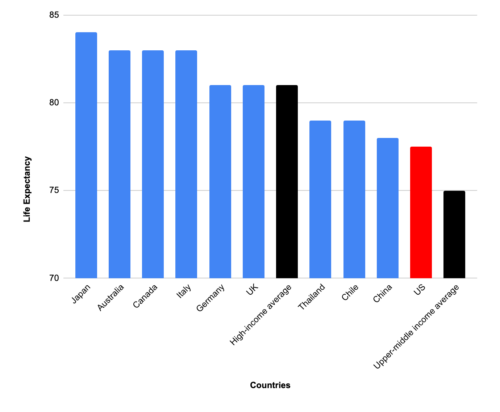Why Some States are New Economy States
By: / 11.24.2010
 When it comes to innovation-based growth, not all states are equal. Certain states are on the front lines, and are accordingly most likely to lead the way to economic recovery. According to a new report from the Information Technology and Innovation Foundation, the most leading New Economy states all excel at supporting a knowledge infrastructure, spurring innovation, and encouraging entrepreneurship.
When it comes to innovation-based growth, not all states are equal. Certain states are on the front lines, and are accordingly most likely to lead the way to economic recovery. According to a new report from the Information Technology and Innovation Foundation, the most leading New Economy states all excel at supporting a knowledge infrastructure, spurring innovation, and encouraging entrepreneurship.
The new report, The 2010 State New Economy Index, uses 26 indicators to assess states’ fundamental capacity to successfully navigate economic change. It measures the extent to which state economies are knowledge-based, globalized, entrepreneurial, IT-driven and innovation-based – in other words, the degree to which state economies’ structures and operations match the ideal structure of the New Economy. Indicators include percent of the population online, fastest growing firms, exports, industry and state R&D among others.
The top five states – Massachusetts, Washington, Maryland, New Jersey, and Connecticut —are at the forefront of the nation’s movement toward a global, innovation-based economy. Massachusetts has been the top ranked state in all iterations of the report (1999, 2002, 2007 and 2008). The Bay State boasts a concentration of software, hardware, and biotech firms supported by world-class universities such as MIT and Harvard in the Route 128 region around Boston. It survived the early 2000s downturn and was less hard hit than the nation as a whole in the last recession. And it has continued to thrive, enjoying the fourth-highest increase in per-capita income. Washington State (which ranked fourth in 2007 and second in 2008) scores high due not only to its strength in software (in no small part due to Microsoft) and aviation (Boeing), but also because Puget Sound region has emerged as entrepreneurial hotbed.
Maryland remains third (as it was in 2007 and 2008, as well), in part because of the high concentration of knowledge workers, many employed in the District of Columbia suburbs and many in federal laboratory facilities or companies related to them. These and the other top ten New Economy states (New Jersey, Connecticut, Delaware, California, Virginia, Colorado, and New York) have more in common than just high-tech firms. They also tend to have a high concentration of managers, professionals, and college educated residents working in “knowledge jobs” (jobs that require at least a two-year degree). With one or two exceptions, their manufacturers tend to be more geared toward global markets, both in terms of export orientation and the amount of foreign direct investment.
All the top ten states also show above-average levels of entrepreneurship, even though some, like Massachusetts and Connecticut, are not growing rapidly in employment. Most are at the forefront of the IT revolution, with a large share of their institutions and residents embracing the digital economy. In fact, the variable that is more closely correlated with a high overall ranking is jobs in IT occupations outside the IT industry itself. Most have a solid “innovation infrastructure” that fosters and supports technological innovation. Many have high levels of domestic and foreign immigration of highly mobile, highly skilled knowledge workers seeking good employment opportunities coupled with a good quality of life.
The two states whose economies have lagged most in making the transition to the New Economy are Mississippi and West Virginia. Other states with low scores include, in reverse order, Arkansas, Alabama, Wyoming, South Dakota, Kentucky, Louisiana, and Oklahoma. Historically, the economies of many of these and other Southern and Plains states depended on natural resources or on mass production manufacturing, and relied on low labor costs rather than innovative capacity, to gain advantage. But innovative capacity (derived through universities, R&D investments, scientists and engineers, and entrepreneurial drive) is increasingly what drives competitive success.
While lower ranking states face challenges, they also can take advantage of new opportunities. The IT revolution gives companies and individuals more geographical freedom, making it easier for businesses to relocate, or start up and grow in less densely populated states farther away from existing agglomerations of industry and commerce. Moreover, notwithstanding the recent decline in housing prices, metropolitan areas in many of the top states suffer from high costs (largely due to high land and housing costs) and near gridlock on their roads. Both factors may make locating in less-congested metros, many in lower ranking states, more attractive, particularly if their metropolitan areas offer high-quality schools, high-quality and efficient government, and a robust infrastructure.
Perhaps the most distinctive feature of the New Economy is its relentless levels of structural economic change. The challenges facing states in a few years could well be different than the challenges today. But notwithstanding this, the keys to success in the new economy now and into the future appear clear: supporting a knowledge infrastructure (world class education and training); spurring innovation (indirectly through universities and directly by helping companies); and encouraging entrepreneurship. In the past decade a new practice of economic development focused on these three building blocks has emerged, at least at the level of best practice, if not at the level of widespread practice. The challenge for states will be to adopt and deepen these best practices and continue to generate new economy policy innovations and drive the kinds of institutional changes needed to implement them.
photo credit: Chantal Wagner







